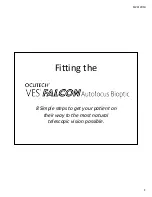
1.2. The tripod (a). The supplied aluminium tripod is used as a platform to place the optical tube.
Here are some details about the tripod’s head – figure 3
.
A- Telescope base;
B- Bubble level;
C- Hand Grip;
D- Lock-az;
E- Tripod Leg;
F- Lock (shaft);
G- Lock (telescope);
H- ¼”-20 Camera thread;
I- Lock (tilt);
J- Shaft.
1.2.1. Extending the tripod. The tripod is compact
and the metal legs can be extended into several
configurations. A central shaft allows additional
extension if required – figure 4.
The most stable configuration is, however, with the
tripod’s legs collapsed to their minimum. It’s
recommend using the collapsed tripod on a table top
for more comfort and stability.
1.2.2. Camera base (A). The tripod’s camera base (A)
is compatible with most photo and video cameras
having a ¼”-20 thread standard. It also allows to level
horizontally by using the integrated bubble level (B).
1.2.3. The hand grip (C). Is used to direct and point
the tripod to a certain direction it also acts as a brake
to fix the tripod to a certain tilt. Release to tilt the
camera base (A) – figure 5.
1.2.4. Rotating the tripod head in az. Release the
Lock-az (D). One can see that the tripod head now
rotates freely around the tripod’s shaft (J) –
azimuth
movement. Tighten to lock in a specific azimuth
direction – figure 6.
Figure 3.
Figure 4.
Figure 5.


























